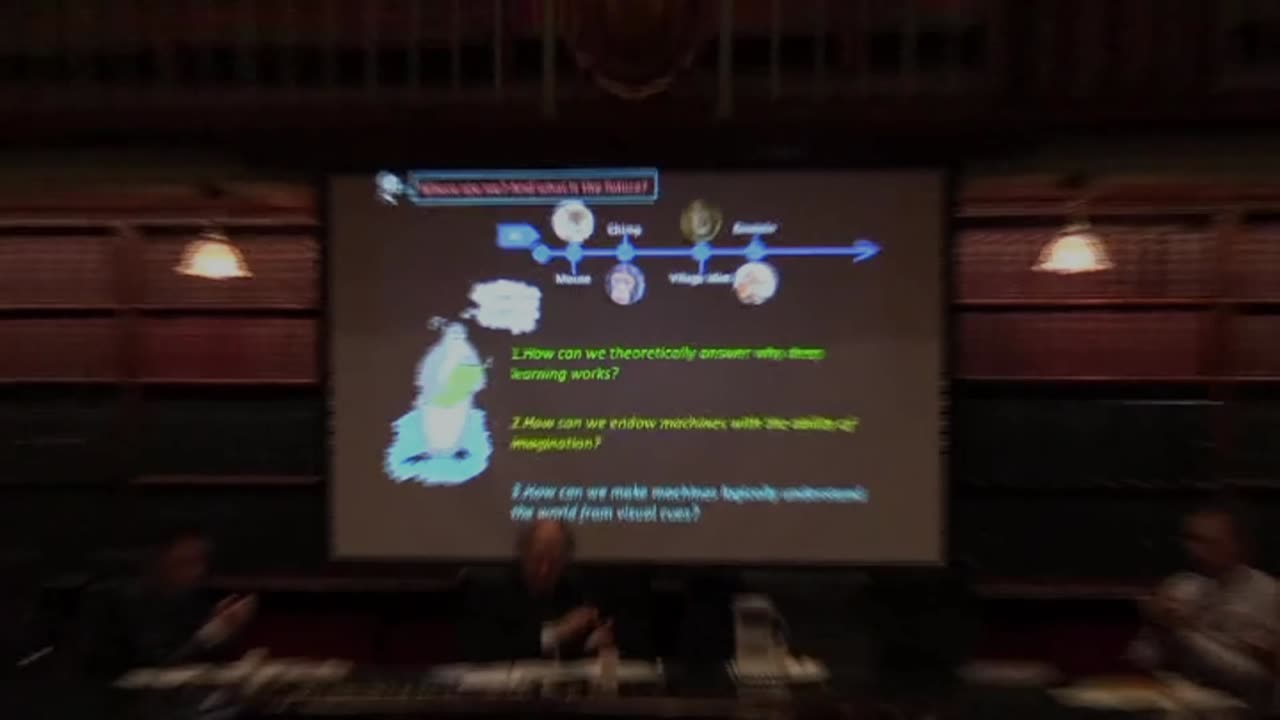Premium Only Content

Dr Chang Xu: Artificial Intelligence - Embracing the Future
SUMMARY:
------------------------------
I’m really excited to share this talk from Dr Chang Xu of the University of Sydney — a brilliant lecturer in machine learning and computer vision who trained at Tianjin University and Peking University and has held fellowships with IBM and Baidu. In this presentation Dr Xu lays out a clear vision for how artificial intelligence should evolve around four core components — perception, learning, reasoning and memory — then dives into practical progress from his group across five visual tasks: object detection, object tracking, scene segmentation, depth estimation and face recognition. You’ll see how multi-layer deep neural networks combine different levels of image information, how short-term and long-term memory ideas improve robust tracking, and how these methods have been tested on real-world videos of cars and pedestrians. There are demos and competition-grade results referenced, plus insights into bringing research into real applications. If you’re into AI, computer vision, or practical machine learning for video, this is a compact, informative talk that’s well worth your time — leave a comment with your questions and I’ll try to follow up!
RUMBLE DESCRIPTION:
-----------------------------------
G’day — glad you’re here. This video features Dr Chang Xu from the University of Sydney presenting an upbeat, practical talk on the future of artificial intelligence, with a strong focus on computer vision. Dr Xu, who completed his Bachelor at Tianjin University and PhD at Peking University and has had fellowships with IBM and Baidu, walks us through four essential components for intelligent machines — perception, learning, reasoning and memory — and shows how his team is advancing each area using modern deep learning techniques.
The bulk of the talk zeroes in on visual signal processing. Dr Xu highlights five representative applications: object detection, multi-object tracking, scene segmentation, depth estimation and face recognition. You’ll hear how multi-layer neural networks extract different types of features from images and how combining those features improves accuracy. There’s also a clear explanation of tracking strategies that integrate short-term and long-term memory to handle occlusion, viewpoint changes and lighting variation. Practical demos include vehicle and pedestrian detection and tracking in real video, and he references competitive results his group has achieved in major recognition challenges.
Who is this for? Students, researchers, industry practitioners and anyone curious about applied AI and computer vision. If you enjoy the video, please like, share and subscribe for more talks and demos. Drop your questions or thoughts in the comments — I’ll be keeping an eye and sharing follow-ups where useful.
⚠️ CONTENT DISCLAIMER ⚠️
The views, opinions, and statements expressed in this video are those of the individual speaker(s) and audience members. They do not necessarily reflect the views, opinions, or positions of Western Heritage Australia or its affiliates.
This content is presented for educational and informational purposes as well as to facilitate public discourse on important social and political issues. We provide a platform for diverse Australian voices to be heard, to assist the public in forming their own informed opinions.
Western Heritage Australia does not endorse, verify, or take responsibility for the accuracy of statements made by speakers. All claims, statistics, and opinions remain the responsibility of the original speaker. Viewers are encouraged to conduct their own research and consult multiple sources when forming opinions on these topics.
This video may contain strong political opinions, controversial viewpoints, strong language, or mature themes. Viewer discretion is advised.
-
 2:16:17
2:16:17
Benny Johnson
2 hours ago🚨Trump Speaks LIVE Now As Senile 'No Kings' Protesters HUMILIATED by Memes | New Assassin Threat…
26.2K69 -

The White House
1 hour agoPresident Trump Participates in a Bilateral Lunch with the Prime Minister of Australia
9292 -
 LIVE
LIVE
Nikko Ortiz
1 hour agoAI Is Just SCARY Now... | Rumble Live
107 watching -
 LIVE
LIVE
The Mel K Show
2 hours agoMORNINGS WITH MEL K - Flipping the Global Chessboard Exposes Decades of Deception - 10-20-25
516 watching -
 LIVE
LIVE
The Shannon Joy Show
1 hour agoALERT: Texas To Implement UK Style Digital ID, Mike Lee Leads National Charge! Live W/ Maria Zeee
150 watching -
 LIVE
LIVE
LFA TV
14 hours agoLIVE & BREAKING NEWS! | MONDAY 10/20/25
4,071 watching -
 LIVE
LIVE
Trumpet Daily
45 minutes agoTrumpet Daily LIVE | Oct. 20, 2025
345 watching -
 LIVE
LIVE
Tudor Dixon
2 hours agoHow Democrat Rule Destroyed California & How Republicans Can Take It Back | The Tudor Dixon Podcast
32 watching -
 1:01:27
1:01:27
VINCE
3 hours agoThe Right Made Him President, The Left Made Him King | Episode 150 - 10/20/25
134K91 -
 2:00:43
2:00:43
Badlands Media
7 hours agoBadlands Daily: October 20, 2025
21.4K11